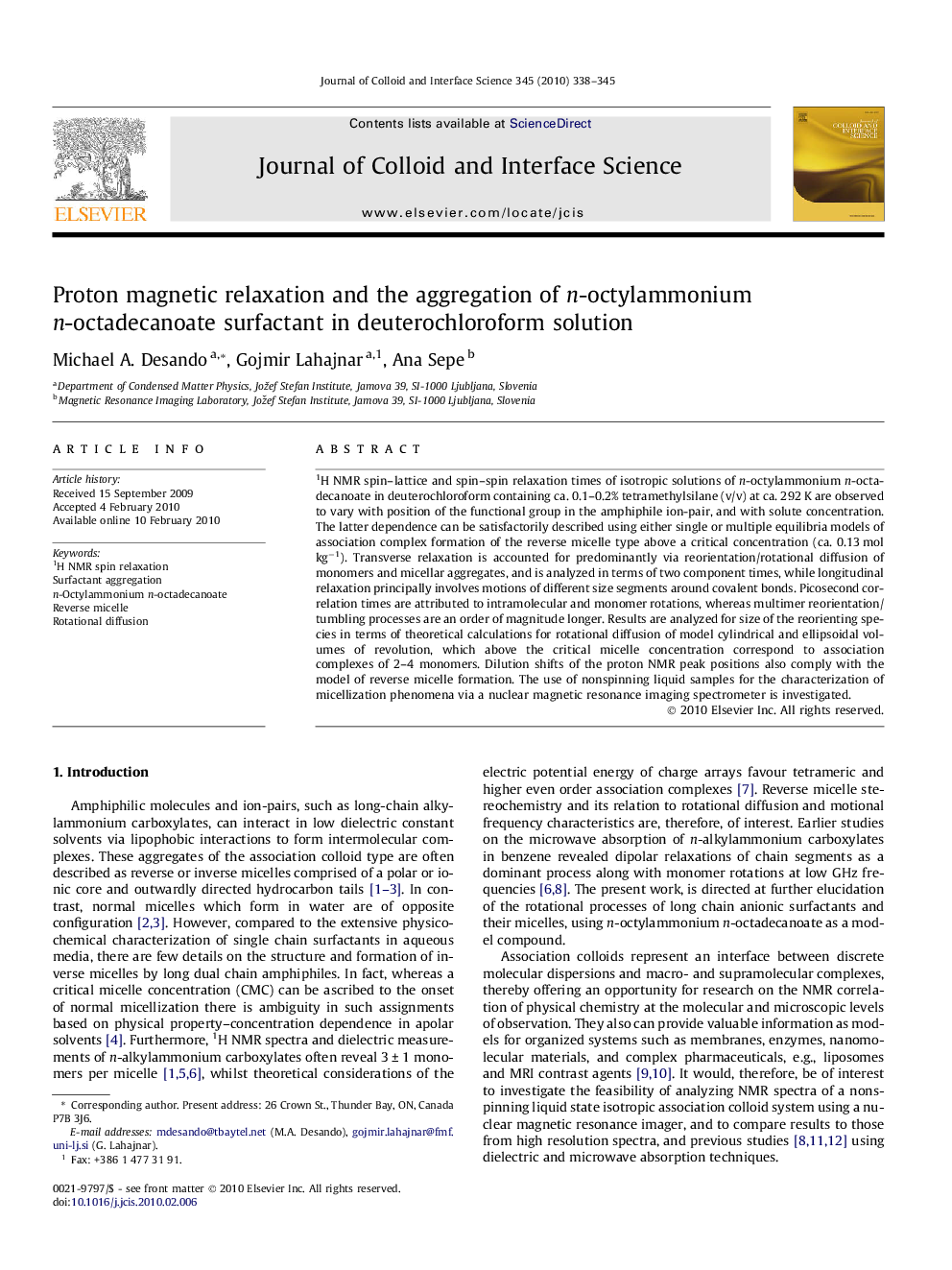| کد مقاله | کد نشریه | سال انتشار | مقاله انگلیسی | نسخه تمام متن |
|---|---|---|---|---|
| 609881 | 880633 | 2010 | 8 صفحه PDF | دانلود رایگان |

1H NMR spin–lattice and spin–spin relaxation times of isotropic solutions of n-octylammonium n-octadecanoate in deuterochloroform containing ca. 0.1–0.2% tetramethylsilane (v/v) at ca. 292 K are observed to vary with position of the functional group in the amphiphile ion-pair, and with solute concentration. The latter dependence can be satisfactorily described using either single or multiple equilibria models of association complex formation of the reverse micelle type above a critical concentration (ca. 0.13 mol kg−1). Transverse relaxation is accounted for predominantly via reorientation/rotational diffusion of monomers and micellar aggregates, and is analyzed in terms of two component times, while longitudinal relaxation principally involves motions of different size segments around covalent bonds. Picosecond correlation times are attributed to intramolecular and monomer rotations, whereas multimer reorientation/tumbling processes are an order of magnitude longer. Results are analyzed for size of the reorienting species in terms of theoretical calculations for rotational diffusion of model cylindrical and ellipsoidal volumes of revolution, which above the critical micelle concentration correspond to association complexes of 2–4 monomers. Dilution shifts of the proton NMR peak positions also comply with the model of reverse micelle formation. The use of nonspinning liquid samples for the characterization of micellization phenomena via a nuclear magnetic resonance imaging spectrometer is investigated.
1H NMR spin–lattice (T1)(T1) and spin–spin (T2)(T2) relaxation times of n-octylammonium n-octadecanoate in CDCl3 show correlation to concentration and chemical shift (δ). Theoretical calculations using rotational diffusion and association equilibrium models are consistent with small reverse micelle formation.Figure optionsDownload high-quality image (40 K)Download as PowerPoint slide
Journal: Journal of Colloid and Interface Science - Volume 345, Issue 2, 15 May 2010, Pages 338–345